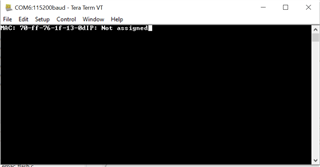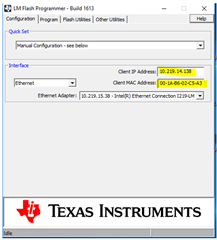Other Parts Discussed in Thread: EK-TM4C1294XL
Hi Team,
I am using TM4C1294 EVK , here i am trying to flash the .hex file via ethernet firmware upgrade, I could able to write the hex file to flash via ethernet, using TCP IP with external application to load the binary from laptop
but the Ethernet also write the junk values form other application like (chrome) when it is open , along with hex file
can you suggest how can fix this
can you also help us to share any working example code for ethernet Firmware upgrade along with or without bootloader using TCP IP packets for TM4C1294 EVK
please help us with working sample example projects and documents for ethernet firmware upgrade
please response ASAP




